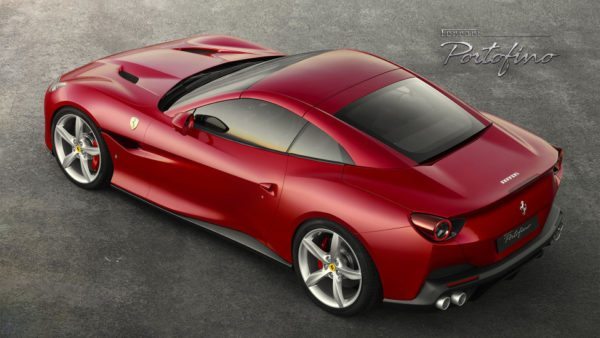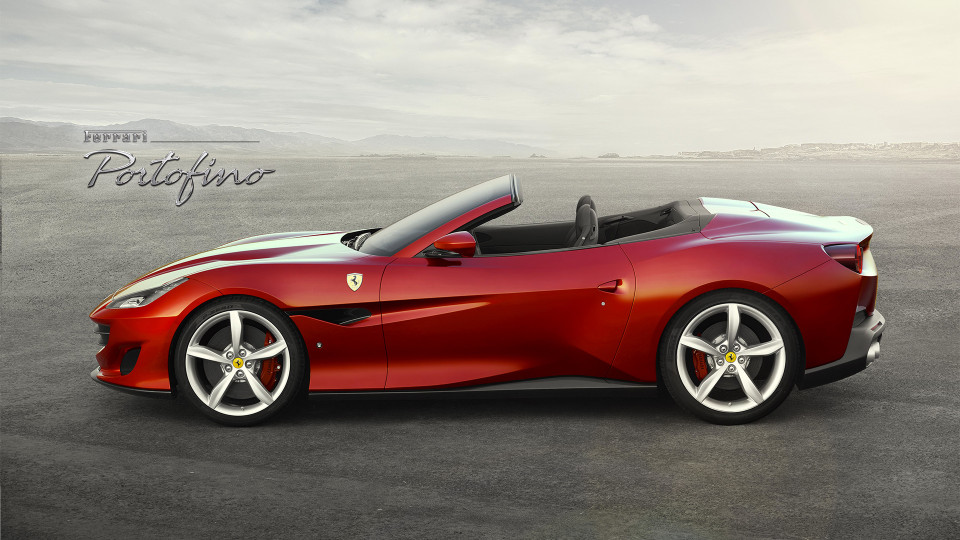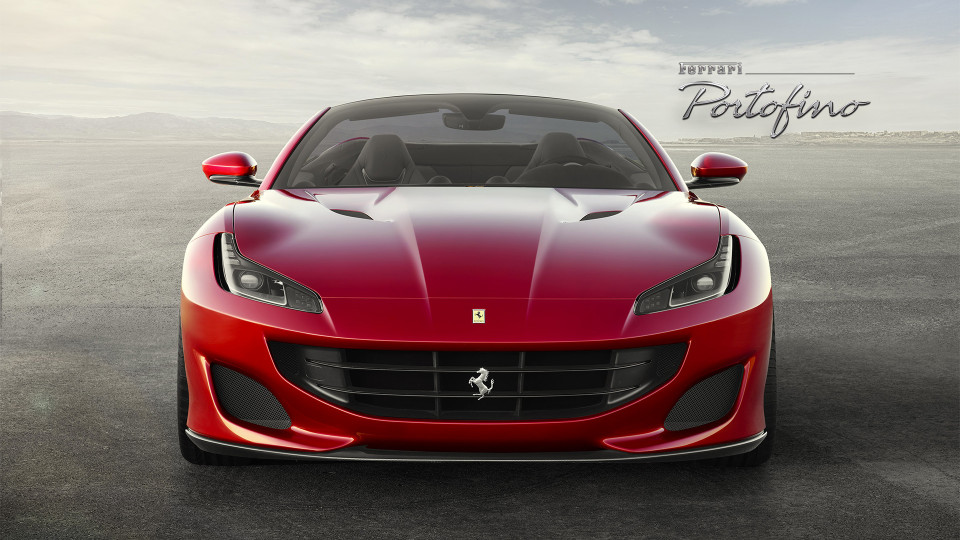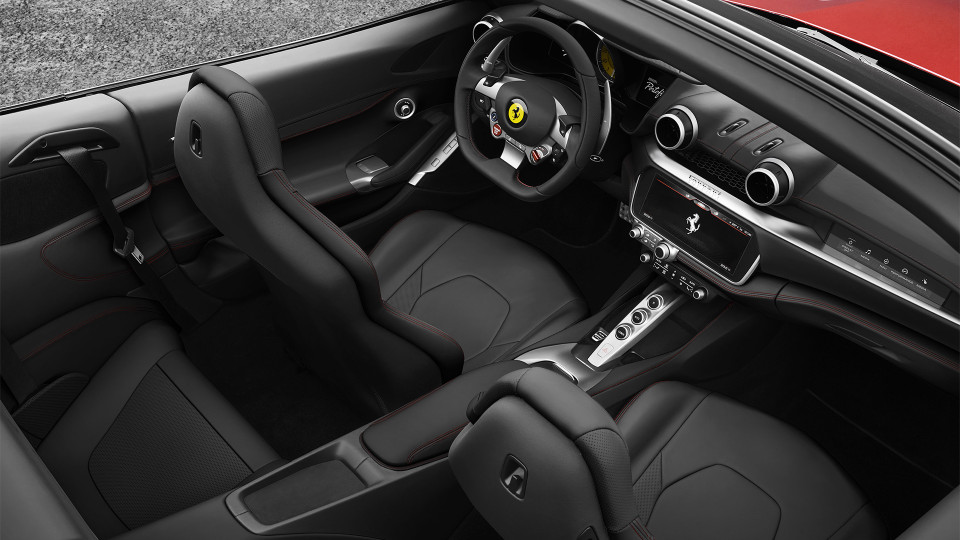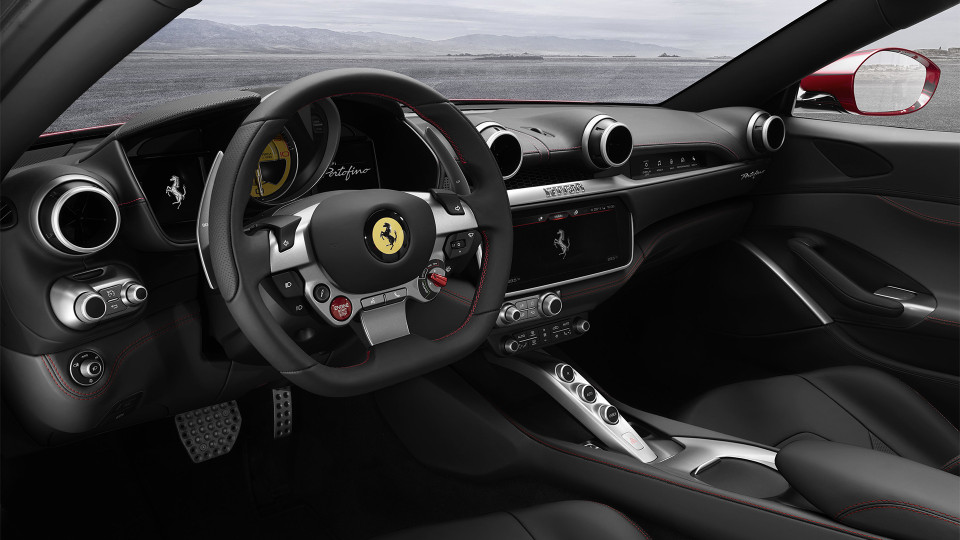Replacing a car which was named after a State in America, the Ferrari Portofino is named after a charming port town in Italy and is the most powerful convertible with a retractable hardtop. Combining practicality with savagery, it also comes with two rear seats, which according to Ferrari, are suitable for short trips. In true Italian style, the new shade of Red which this Sports Car wears with pride has been dedicated to the same town and is called Rosso Portofino.
Powering this belle is a front mounted 592 bhp twin-turbo V8 which helps the Portofino slip from 0 – 100 kph in just 3.5 seconds and attain a top speed of 320 kph! Although it breathes through additional apparatus, Ferrari says that the V8 soundtrack has been further enhanced and can be fully appreciated, especially in top-down driving. All aspects of the 8-cylinder’s efficiency have been honed with the adoption of new pistons and conrods, and a new intake system design. The geometries throughout the exhaust system have also been tweaked.
A new one-piece-cast exhaust header reduces losses, an important factor in ensuring Ferrari’s characteristic throttle response with zero turbo lag. These improvements, combined with the Variable Boost Management which adjusts torque delivery to suit the gear selected, enable the Ferrari Portofino to offer even higher levels of acceleration in all gears and lower fuel consumption compared to the outgoing model.
The car is based on an all-new chassis which weighs significantly less compared to the California T it replaces. Thanks to the extensive use of modern production technologies, all chassis and body components have been redesigned with a consequent reduction in weight despite an increase in torsional rigidity.
The Ferrari Portofino’s vehicle dynamic characteristics have been revised and benefit from the introduction of a third generation electronic rear differential (E-Diff3) which has been integrated with the F1-Trac, improving both mechanical grip and the control of the car on the limit. The Ferrari Portofino is also the first GT in the range to be fitted with EPS (Electric Power Steering). This allowed the engineers to reduce the steering ratio by seven per cent for even more responsive steering without a trade-off in stability thanks to the integration with the E-Diff3. The magnetorheological damping system (SCM-E) has been uprated with dual-coil technology which helps reduce roll while simultaneously improving absorption of road surface unevenness.
Penned by Ferrari Design, the Portofino is an aggressively-styled car with a two-box fastback configuration with a retractable hard top that adds extra sleekness to its silhouette, lending it a sportier character without sacrificing elegance or dynamism. Close collaboration between the Aerodynamics department and Ferrari Design has ensured maximum efficiency in the development of the surface treatment. A new full-LED headlight assembly is more horizontal than ever and its outside edges hide an innovative air intake which vents into the front wheel arch and exits along the flank to reduce drag.
Although there is no need for one, an infotainment system exists, courtesy of a 10.2” touchscreen display. A new air-conditioning system improves occupant comfort both with the top up or down. Then there’s a new steering wheel, 18-way electrically adjustable seats with a new backrest design that boosts legroom for rear seat passengers, and a new wind deflector which, when the top is dropped, cuts air flow inside the cabin by 30% and also reduces aerodynamic noise.
Technical Specifications
- ENGINE: Type V8 – 90°
- Overall displacement 3855 cm3
- Maximum power output * 441 kW (600 cv) at 7500 rpmMaximum torque * 760 Nm from 3000 to 5250 rpm
- WEIGHT AND DIMENSIONS: Length 4586 mm, Width 1938 mm, Height 1318 mm
- Weight distribution: 46-54% front/rearP
- Maximum speed : 320 Km/h
- 0-100 km/h: 3.5 sec
- Fuel consumption: 10,5 l/100km
- Emissions: 245g CO2/km

